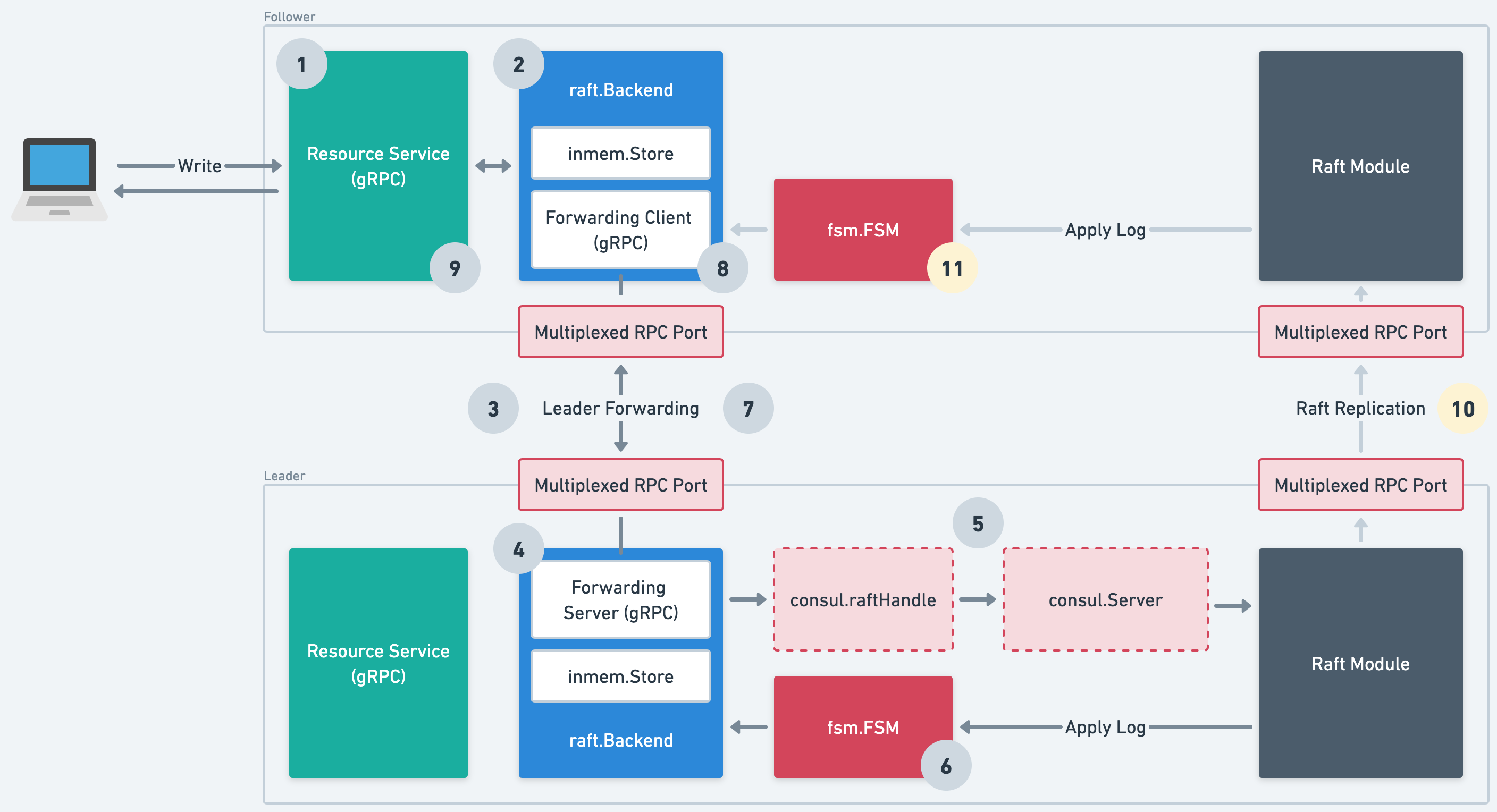* update guide to reflect tenancy and scope * Apply suggestions from code review Co-authored-by: Semir Patel <semir.patel@hashicorp.com> * update ACLHooks signature * Update docs/resources/guide.md Co-authored-by: Semir Patel <semir.patel@hashicorp.com> --------- Co-authored-by: Semir Patel <semir.patel@hashicorp.com> |
||
|---|---|---|
| .. | ||
| README.md | ||
| architecture-overview.png | ||
| guide.md | ||
| raft-backend.png | ||
README.md
Resources
Note
Looking for guidance on adding new resources and controllers to Consul? Check out the developer guide.
Consul 1.16 introduced a set of generic APIs for managing resources, and a controller runtime for building functionality on top of them.
Previously, adding features to Consul involved making changes at every layer of the stack, including: HTTP handlers, RPC handlers, MemDB tables, Raft operations, and CLI commands.
This architecture made sense when the product was maintained by a small core group who could keep the entire system in their heads, but presented significant collaboration, ownership, and onboarding challenges when our contributor base expanded to many engineers, across several teams, and the product grew in complexity.
In the new model, teams can work with much greater autonomy by building on top of a shared platform and own their resource types and controllers.
Architecture Overview
Our resource-oriented architecture comprises the following components:
Resource Service
Resource Service is a gRPC service that contains the shared logic for creating, reading, updating, deleting, and watching resources. It will be consumed by controllers, our Kubernetes integration, the CLI, and mapped to an HTTP+JSON API.
Type Registry
Type Registry is where teams register their resource types, along with hooks for performing structural validation, authorization, etc.
Storage Backend
Storage Backend is an abstraction over low-level storage primitives. Today, there are two implementations (Raft and an in-memory backend for tests) but in the future, we envisage external storage systems such as the Kubernetes API or an RDBMS could be supported which would reduce operational complexity for our customers.
Controllers
Controllers implement Consul's business logic using asynchronous control loops that respond to changes in resources.
Raft Storage Backend
Our Raft Storage Backend integrates with the existing Raft machinery (e.g. FSM) used by the old state store. It also transparently forwards writes and strongly consistent reads to the leader over gRPC.
There's quite a lot going on here, so to dig into the details, let's take a look at how a write operation is handled.
Steps 1 & 2
User calls the resource service's Write endpoint, on a Raft follower, which
in-turn calls the storage backend's WriteCAS method.
Steps 3 & 4
The storage backend determines that the current server is a Raft follower, and
forwards the operation to the leader via a gRPC forwarding service listening
on the multiplexed RPC port (ports.server).
Step 5
The leader's storage backend serializes the operation to protobuf and applies it
to the Raft log. As we need to share the Raft log with the old state store, we go
through the consul.raftHandle and
consul.Server which applies a msgpack
envelope and type byte prefix.
Step 6
Raft consensus happens! Once the log has been committed, it is applied to the
FSM which calls the storage backend's Apply
method to apply the protobuf-encoded operation to the inmem.Store.
Steps 7, 8, 9
At this point, the operation is complete. The forwarding service returns a successful response, as does the follower's storage backend, and the user gets a successful response too.
Steps 10 & 11
Asynchronously, the log is replicated to followers and applied to their storage backends.

